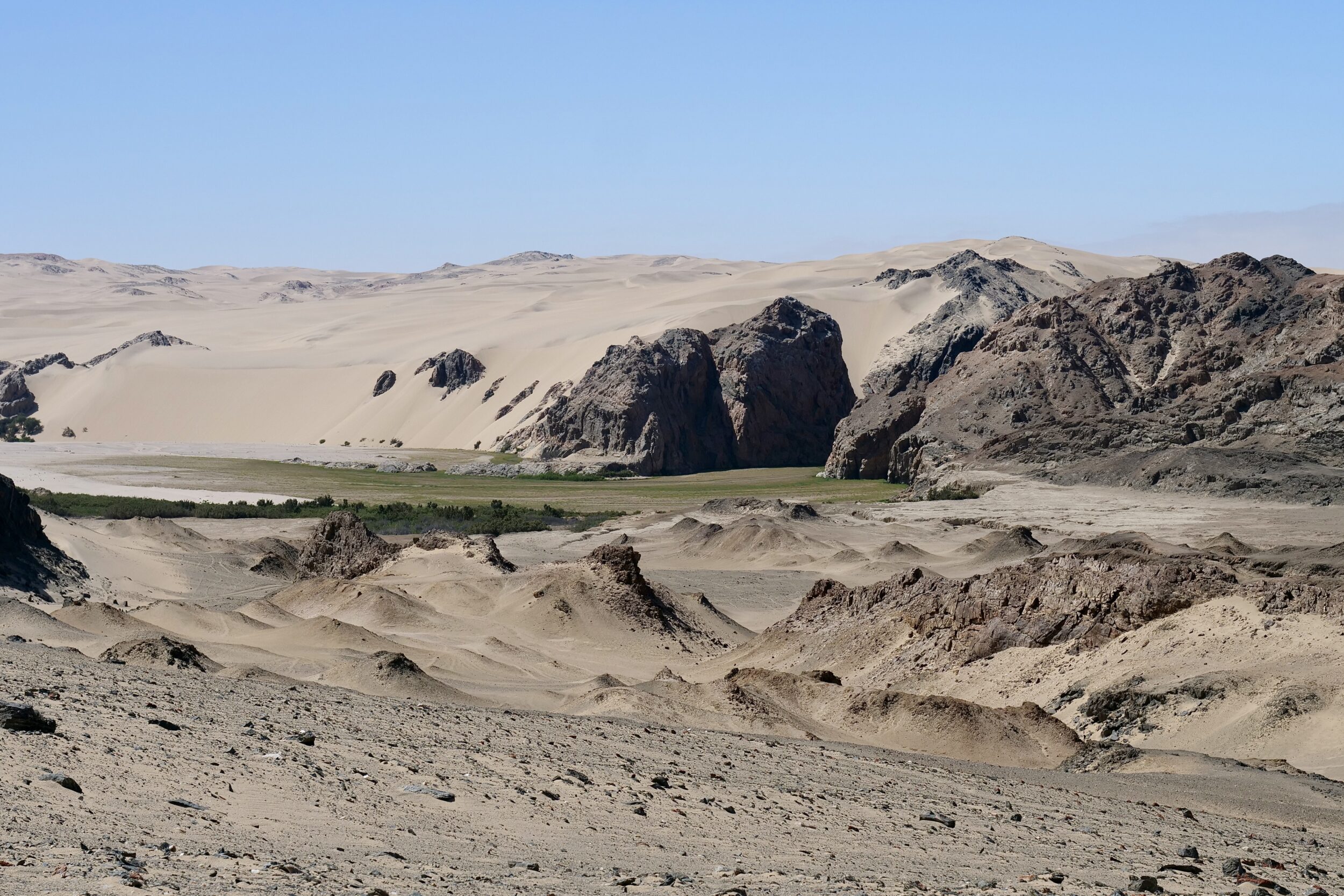This post’s photo (copyright Doug Spencer) was taken at 10.14 am on 14 November 2022, nearly twenty minutes after the previous post’s.
We were making our way back down to the bed of the Hoarusib River, which we would then drive along a little further inland, before turning left, into a canyon that the Hoarusib occasionally “invades”/floods.
That canyon has “sandcastles” that are vastly bigger – and enormously older/more durable – than any sandcastle on any seashore…as you will see in #11 & #12 of this series.
The appearance of the pictured section of the Hoarusib would suggest that it just might have recently flowed all – or almost all – the way to the Atlantic
Then again, you might just be looking at a soak; desert rivers like the Hoarusib only rarely and briefly carry “visibly flowing” water all the way to an ocean shore, but they often – for very much longer periods – carry water that moves beneath the riverbed’s surface.
Some of that water accumulates in particular spots.
Desert-adapted elephants dig for safe water in them, and pass on knowledge of their locations.
We were not lucky enough to encounter desert elephants in the Hoarusib, nor desert adapted lions, but we would soon (elsewhere, inland) enjoy a memorable encounter with the former, as previously reported.
We did encounter other mammals in and beside the Hoarusib’s bed, as the present series will show, eventually.
